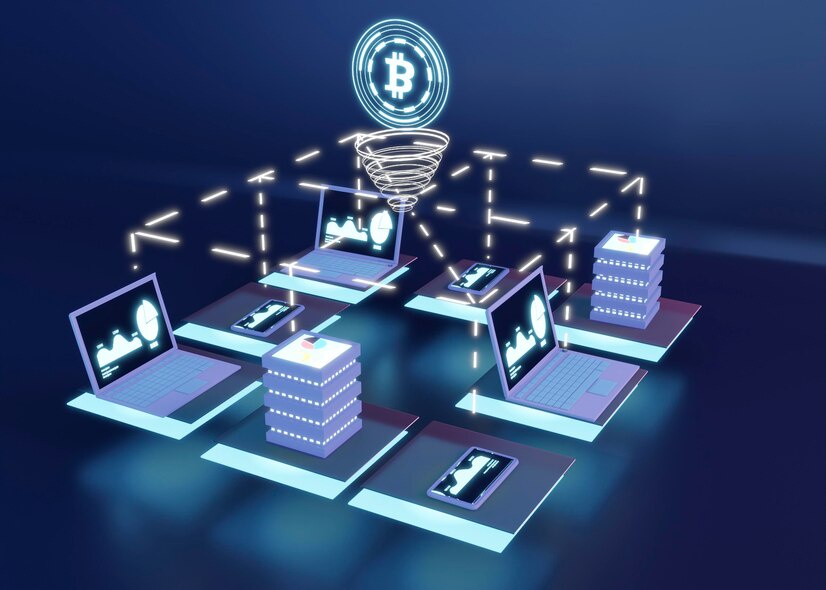In the ever-evolving landscape of blockchain technology, decentralized exchanges (DEXs) have emerged as a pivotal force, revolutionizing
how we trade and manage digital assets. This comprehensive guide aims to shed light on the intricacies of decentralized exchange development, providing developers, entrepreneurs, and enthusiasts with a roadmap to navigate the complex world of building decentralized trading platforms.
Understanding Decentralized Exchanges
Traditional centralized exchanges have long been the go-to platforms for cryptocurrency trading. However, the inherent vulnerabilities associated with centralized systems, such as security breaches, custodial risks, and regulatory challenges, have paved the way for the rise of decentralized exchanges.
Decentralized exchanges operate on blockchain networks, enabling peer-to-peer trading without intermediaries to hold users' funds. This decentralized model enhances security, eliminates single points of failure, and preserves the core tenets of blockchain technology – transparency and trustlessness.
Key Components of Decentralized Exchanges
- Smart Contracts: At the heart of any decentralized exchange lies intelligent contracts. These self-executing contracts facilitate the trustless execution of trades, ensuring that the terms of the agreement are met without the need for a centralized authority. Smart contracts are typically deployed on blockchain networks such as Ethereum, Binance Smart Chain, or other compatible platforms.
- Liquidity Pools: Liquidity is crucial for the success of any exchange. In decentralized exchanges, users who contribute their funds to liquidity pools often provide liquidity. These pools facilitate trading by ensuring enough assets are available for users to buy or sell. Liquidity providers are rewarded with fees generated from trades.
- Wallet Integration: Decentralized exchanges interact directly with users' wallets, eliminating the need for users to create accounts or deposit funds on the exchange. Wallet integration is critical, ensuring a seamless and user-friendly experience for traders. MetaMask, Trust Wallet, and Ledger are popular choices for wallet integration.
Steps to Develop a Decentralized Exchange
- Define the Purpose and Features: Before embarking on the development journey, it is essential to define the decentralized exchange's purpose and outline its features. Consider factors such as supported assets, trading pairs, user experience, and security features.
- Choose the Blockchain Platform: Selecting a blockchain platform is a crucial decision that impacts the decentralized exchange's scalability, security, and overall functionality. Ethereum, with its robust intelligent contract capabilities, is a popular choice, but other platforms like Binance Smart Chain, Polkadot, and Solana are gaining traction.
- Develop Smart Contracts: The core functionality of a decentralized exchange relies on smart contracts. Developers must design and deploy smart contracts that facilitate trading, settlement, and withdrawal. Security audits are imperative to identify and mitigate potential vulnerabilities.
- Implement User Wallets: Integration with user wallets is a pivotal step. Implement wallet functionalities to allow users to connect their wallets seamlessly and trade directly from their crypto wallets.
- Build a User Interface: Design an intuitive and user-friendly interface for the decentralized exchange. The interface should provide easy navigation, real-time market data, and a smooth trading experience. Consider incorporating features like order books, price charts, and transaction history.
- Ensure Security Measures: Security is paramount in decentralized exchanges. Implement robust security measures, including encryption protocols, two-factor authentication, and regular security audits. Learn from past security breaches in the industry to fortify your exchange against potential threats.
- Liquidity Management: Integrate liquidity management solutions to attract liquidity providers and ensure sufficient liquidity for trading pairs. Implementing automated market makers (AMMs) or integrating with existing liquidity protocols can enhance the liquidity ecosystem.
- Compliance and Regulation: Stay informed about the regulatory landscape in your decentralized exchange's jurisdictions. Implement necessary compliance measures to adhere to legal requirements, including Know Your Customer (KYC) procedures and Anti-Money Laundering (AML) checks.
Challenges and Considerations
- Scalability: Scalability remains a challenge for decentralized exchanges, especially during periods of high demand. Choose a blockchain platform that addresses scalability concerns and consider implementing layer-2 solutions to enhance transaction throughput.
- Interoperability: Interoperability is crucial for seamlessly transferring assets between different blockchain networks. Explore solutions such as bridges or interoperability protocols to enhance the cross-chain functionality of your decentralized exchange.
- User Education: Cryptocurrency and decentralized exchanges can be complex for the average user. Provide educational resources and user guides to help traders navigate the platform and understand key concepts like private keys, gas fees, and wallet management.
- Market Adoption: Building a decentralized exchange is just the first step. Consider strategies for marketing and community engagement to foster adoption. Collaborate with influencers, participate in community forums, and leverage social media to create awareness about your decentralized exchange.
Future Trends in Decentralized Exchanges
- Cross-Chain Trading: The future of decentralized exchanges lies in enabling cross-chain trading, allowing users to trade assets seamlessly across different blockchain networks. Solutions like wrapped tokens and cross-chain bridges pave the way for a more interconnected decentralized ecosystem.
- Decentralized Finance (DeFi) Integration: Integrating decentralized finance protocols within decentralized exchanges is a growing trend. Features such as lending, borrowing, and yield farming can enhance the overall utility of a decentralized exchange and attract a broader user base.
- Non-Fungible Token (NFT) Marketplaces: NFTs have gained immense popularity, and integrating NFT marketplaces within decentralized exchanges is a logical progression. Users can trade fungible and non-fungible assets within the same platform, creating a more comprehensive trading experience.
- Enhanced User Experience: As decentralized exchanges evolve, a focus on improving user experience will be pivotal. Intuitive interfaces, faster transaction speeds, and reduced gas fees will create a more user-friendly decentralized trading environment.
Conclusion
Decentralized exchanges represent a paradigm shift in cryptocurrency trading, offering a more secure, transparent, and inclusive alternative to traditional centralized exchanges. Navigating the future of decentralized exchange development requires a thorough understanding of blockchain technology, innovative contract development, and user experience design.
By following the steps outlined in this comprehensive guide, developers and entrepreneurs can embark on the journey of building decentralized exchanges that contribute to the ongoing transformation of the financial landscape. As the decentralized ecosystem evolves, staying abreast of emerging trends and technologies will be vital to creating innovative and resilient decentralized exchange platforms.


No comments yet